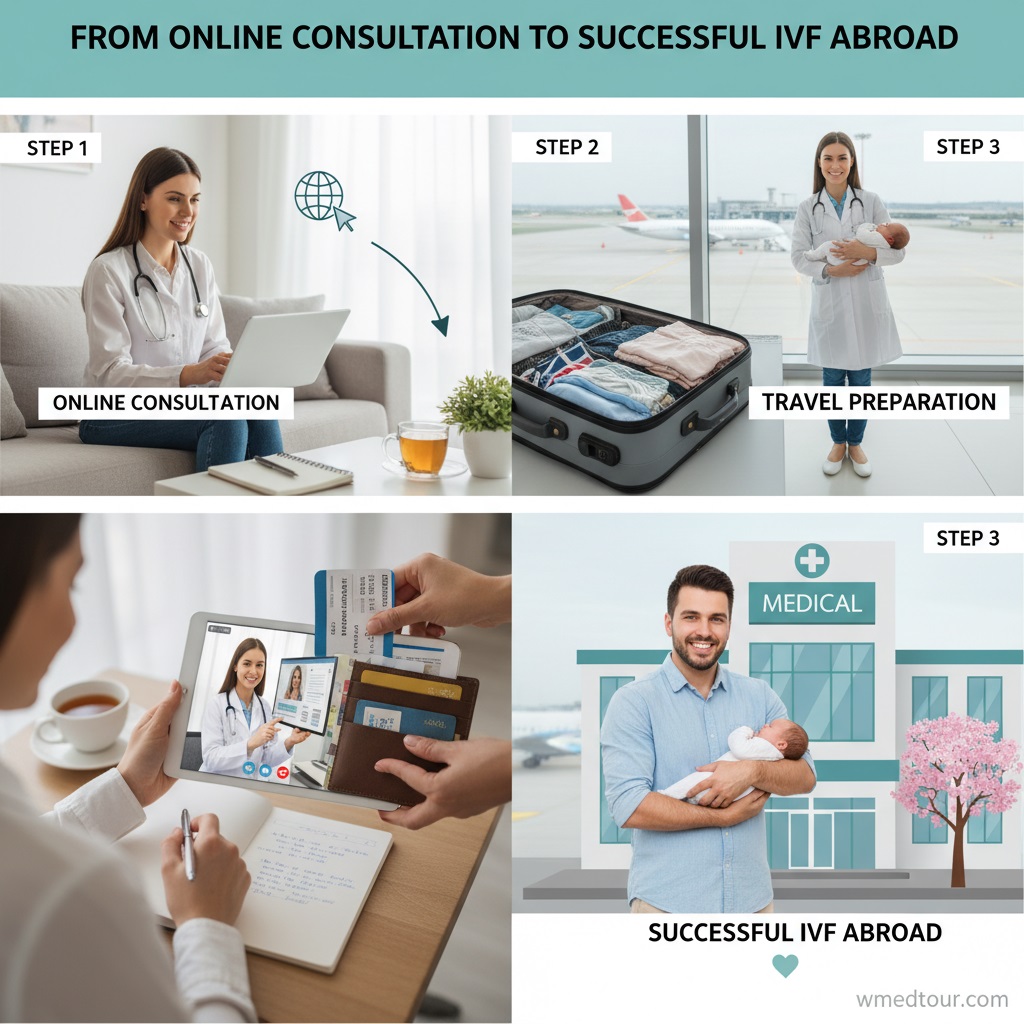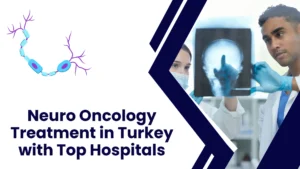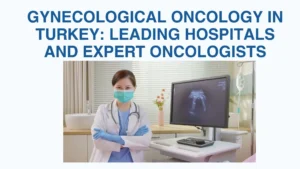🗺️ Step-by-Step Journey: From Online Consultation to Successful IVF Abroad: Your Comprehensive Guide
✨ The Decision to Seek Care Abroad
Embarking on the journey of In Vitro Fertilization (IVF) is a significant, complex, and often emotional decision. When you choose to pursue fertility treatment internationally, that journey becomes even more layered. Therefore, it presents unique logistical and emotional considerations that require careful navigation. However, the promise of higher success rates, lower costs, or access to advanced technologies makes traveling for care a compelling option for many intended parents. This definitive guide illuminates the entire Step-by-Step Journey: From Online Consultation to Successful IVF Abroad, providing a clear, empathetic, and authoritative roadmap from the earliest research to holding your baby. Indeed, seeking specialized medical care like IVF outside your home country—often referred to as medical tourism—requires meticulous planning and reliable support. Our primary goal is to demystify this process. Consequently, we aim to transform a potentially overwhelming prospect into a manageable, hopeful reality. We know that clarity breeds confidence, and furthermore, confidence is a crucial element on the path to parenthood. Therefore, this comprehensive guide walks you through every phase, from the earliest digital outreach to post-procedure recovery. Moreover, understanding the regulatory landscape is essential; always consult the global medical treatment regulations guide before making a final choice.
💡 Executive Summary: Key Takeaways for Your Journey
- The IVF abroad journey begins with comprehensive online consultation and initial paperwork, which establishes a personalized treatment plan with your chosen clinic.
- Due diligence is paramount: vet clinics rigorously, compare success rates, and verify credentials. For this reason, utilize resources like WMedTour and ensure the clinic reports to bodies like ESHRE.
- Effective planning involves securing your medical visa, arranging detailed travel logistics, and coordinating complex medication protocols before departure.
- The on-site experience involves pre-cycle testing, ovarian stimulation, egg retrieval (often with techniques like ICSI), and embryo transfer.
- Successful medical travel hinges on choosing destinations with robust healthcare, supportive environments, and transparent ethical standards for fertility treatments abroad.
- Finally, recovery and continuous digital follow-up care must be meticulously planned for both abroad and upon returning home. As a result, post-procedure communication is vital for success.
🎯 Who is This Step-by-Step Guide For?
This detailed guide is specifically tailored for several groups of people who are considering or actively planning their fertility journey abroad. Firstly, it’s essential for intended parents facing high domestic costs. These are individuals or couples whose local IVF costs are prohibitive. They seek equally high-quality, more affordable options internationally. In other words, cost is a major driver, leading them to look at options like the cheapest IVF trusted centers abroad. Secondly, this guide is crucial for patients seeking advanced or specific treatments. This includes those who need access to specialized services. For example, they might need comprehensive Preimplantation Genetic Testing (PGT) or specialized fetal gender selection methods that may be unavailable or legally restricted in their home country.
Furthermore, it targets individuals seeking better success rates. These are people who have experienced unsuccessful cycles domestically and are actively looking for clinics with statistically better outcomes in specific patient demographics. Consequently, they are seeking a highly specialized approach. Lastly, medical tourism professionals and facilitators will find this an invaluable resource. Indeed, anyone involved in the logistics and support of cross-border healthcare, from coordinators to travel agents, will find this a useful template for patient management and expectation setting. If you’re currently asking, “How do I successfully manage my Step-by-Step Journey: From Online Consultation to Successful IVF Abroad?”—this is your definitive starting point. Therefore, read on to secure your future.
1️⃣ Phase 1: The Virtual Vetting and Online Consultation (The Digital Gateway)
The entire process of modern, organized medical tourism is digitized. Consequently, it begins long before you book a flight or pack a suitcase. The initial online consultation is, therefore, the most critical first step. This phase lays the foundation for all subsequent success.
🔎 Step 1.1: Researching and Shortlisting Clinics
Before any consultation, thorough research is non-negotiable. You should compare potential destinations like Turkey, Iran, or Cyprus based on key factors: cost, success rates (verified by independent bodies like SART or ESHRE, where possible), regulation, and unbiased patient reviews. Look specifically for clinics specializing in your specific needs. For instance, some are experts in specific forms of PGT, while others have stronger protocols for older women.
Expert Tip: Focus not just on the headline success rate but on the “live birth rate per embryo transferred” for your specific age group. Moreover, ask detailed questions about their protocols for common challenges, such as diminished ovarian reserve. This information should be readily available and verifiable.
Crucially, ensure the clinic aligns with established ethical and medical standards. **For example**, verify they hold international accreditation, as mandated by the standards of leading medical bodies. Therefore, always look for transparent reporting mechanisms.
💬 Step 1.2: Document Submission and Virtual Meeting
The first formal point of contact typically involves submitting your **complete medical history**. This includes previous test results (hormone levels, semen analysis, infectious disease screening, and previous cycle reports). This comprehensive submission allows the fertility specialist to pre-assess your case accurately.
Subsequently, the online consultation takes place—most often via a secure video call. This meeting is the true start of your personalized Step-by-Step Journey: From Online Consultation to Successful IVF Abroad. During this vital session, the doctor will:
- Review your full diagnosis and discuss previous failed cycles, if any.
- Recommend a specific, evidence-based treatment plan, which might include standard IVF, PGT-A, or the use of donor gametes.
- Outline the precise treatment timeline and the duration of your required stay abroad.
It is vital to receive comprehensive counseling and informed consent, especially when dealing with advanced options like gender selection in IVF. Thus, clear communication is essential, as this consultation defines the entire path forward.

2️⃣ Phase 2: Planning and Preparation (The Logistics Bridge)
Once your final treatment plan is confirmed and signed off, meticulous logistical preparation begins. Consequently, this phase bridges the gap between the virtual world and the physical journey, minimizing stress during the actual treatment.
📄 Step 2.1: Financial, Administrative, and Legal Planning
The financial aspect is a primary motivator for many seeking treatment abroad. Therefore, you must obtain a detailed, itemized, and transparent **cost breakdown** from the clinic. This breakdown must include the cost of the IVF cycle (medication, monitoring, retrieval, transfer), associated fees (anesthesia, freezing embryos, ICSI, PGT), and all estimated travel, accommodation, and local transport costs. Utilize resources like the WMedTour pre-travel resources and checklists to ensure nothing is missed. Ensure you understand the clinic’s refund policy and costs associated with cycle cancellation—a necessary contingency plan.
Furthermore, securing the right documents, including potentially a medical visa for Iran or other specific documents, is paramount. We must also emphasize the need for **adequate travel insurance** that explicitly covers medical emergencies, as this is often overlooked. Indeed, comprehensive planning at this stage saves thousands of dollars and mitigates most risks.
💊 Step 2.2: Pre-Cycle Medication and Local Monitoring Coordination
Most IVF cycles involve a “long-distance” protocol. The initial stages of ovarian stimulation or suppression may occur in your home country. As a result, this requires close and precise coordination between your foreign fertility clinic and your local physician or monitoring facility. You will typically be instructed on how to self-administer injectable medications and when to undergo blood tests and ultrasounds. The pre-travel checklist for fertility treatments offers an excellent framework for managing this remote monitoring phase. In addition, strict adherence to the medication schedule is critical for timing the travel correctly.
✈️ Step 2.3: Booking and Destination Finalization
Book flights and accommodation strategically, opting for lodging close to the clinic to minimize travel stress during the intensive monitoring phase. Given the sensitivity of the treatment, choosing comfortable, reliable lodging is essential. Check the climate and local customs. If you are traveling to a specific region like the Middle East, familiarize yourself with the cultural nuances and local laws outlined in the medical travel guides for a smoother experience. In summary, careful planning ensures a relaxed and successful start to the physical component of your journey.
3️⃣ Phase 3: The On-Site Treatment (The Clinical Experience)
This phase represents the core of the Step-by-Step Journey: From Online Consultation to Successful IVF Abroad, where the virtual plan becomes a physical reality. Your time abroad typically lasts between 10 days and three weeks, depending on whether a fresh or frozen transfer protocol is chosen. Therefore, be prepared for an extended but worthwhile stay.
🩺 Step 3.1: Arrival and Intensive Local Monitoring
Upon arrival, you will have an essential in-person consultation with your foreign doctor. The clinic will then take over the monitoring process entirely. This includes frequent (often daily) blood tests to measure hormone levels (e.g., estrogen, progesterone) and transvaginal ultrasounds to track follicular development precisely. Consequently, the doctor will adjust medication dosages in real-time based on these results. A structured approach helps you keep track of all necessary steps. For a complete understanding of the entire procedure, refer to the IVF process ultimate step-by-step guide.
🥚 Step 3.2: Egg Retrieval and Fertilization (ICSI)
When the follicles reach the optimal size, **the doctor administers** a “trigger shot” to finalize egg maturation. Approximately 36 hours later, the **egg retrieval procedure** (Oocyte Retrieval) takes place under light sedation. At the same time, **the lab prepares** the sperm sample. The fertilization process begins, often involving Intracytoplasmic Sperm Injection (ICSI) to maximize the chances of success, especially in cases of male factor infertility. Post-retrieval, your clinic will provide clear instructions for rest and recovery. Thus, this step demands precision and post-operative care.
🔬 Step 3.3: Embryo Development, PGT, and Transfer
Over the next 3 to 5 days, the fertilized eggs—now **embryos**—are carefully monitored in the laboratory. If PGT is part of your plan (often essential for gender selection or screening for genetic diseases), **the embryologist biopsies** a few cells from the embryo on Day 5, and **sends** the sample for analysis. Therefore, the lab work is critical. Based on the PGT results (if applicable) and the embryologist’s assessment, the highest-quality embryo(s) are selected for transfer. The embryo transfer itself is a simple, non-surgical procedure where a catheter is used to place the embryo into the uterus. This marks the successful culmination of the most intensive part of your Step-by-Step Journey: From Online Consultation to Successful IVF Abroad. Finally, the patient enters the two-week wait.
4️⃣ Phase 4: Recovery and Post-Procedure Support
The time between transfer and the pregnancy test is often called the “Two-Week Wait” (2WW). While you may return home shortly after the transfer, continuous support and meticulous follow-up are vital for a positive outcome.
🏡 Step 4.1: The Return and Local Monitoring
Most patients return home within a day or two of the embryo transfer. **Your doctor will prescribe** hormonal support (progesterone) to continue until your home pregnancy test. Close communication with your foreign clinic and coordination with a local physician for the initial pregnancy test and subsequent monitoring are essential. Remember the importance of recovery after any procedure. Even a simple transfer requires planning, much like aftercare for surgical procedures. Therefore, prioritize rest and stress reduction upon returning.
📞 Step 4.2: Continuous Digital Follow-Up and Handover
A reputable medical tourism facilitator ensures continuous follow-up. This includes reporting your pregnancy test results, addressing any post-procedure concerns, and coordinating the smooth transfer of your medical records to your local obstetrician/gynecologist once pregnancy is confirmed. According to a study published in the Journal of Assisted Reproduction and Genetics, continuity of care, even across borders, is a significant predictor of positive IVF outcomes. Indeed, this level of digital support is crucial for the overall success of the journey.

⚖️ Pros and Cons of Pursuing IVF Abroad
Deciding to pursue IVF abroad is a significant commitment. Consequently, it involves trade-offs between cost, accessibility to specialized care, and the necessary logistics of travel. Here is an in-depth breakdown of the primary advantages and disadvantages.
➕ Pros of IVF Abroad
- Significant Cost Savings: The cost of an IVF cycle can be 50% to 70% lower in countries like the Czech Republic, Mexico, or Turkey compared to the US or UK. Consequently, this makes treatment accessible to those who otherwise could not afford it, allowing funds for subsequent cycles if needed.
- Access to Advanced or Specific Techniques: Certain procedures, such as specific types of PGT or novel methods in IVF (e.g., those involving AI, as outlined in new methods in IVF in 2025), may be more readily available or less regulated abroad. In short, you gain access to a wider range of options.
- Shorter Wait Times: In many private international clinics, the bureaucracy is significantly reduced. Thus, this leads to faster access to consultation and treatment, often eliminating the year-long waitlists sometimes seen in national healthcare systems.
- Anonymity and Privacy: Traveling offers a valuable level of privacy. This allows couples to go through the emotional process away from local scrutiny and judgment, reducing stress.
- Higher Quality of Care in Select Centers: Many international centers invest heavily in state-of-the-art technology and attract world-class specialists. When choosing a surgeon or clinic, using a thorough checklist is indispensable to verify this quality.
- Favorable Legal Frameworks: Laws regarding donor anonymity, embryo freezing limits, and PGT (including for gender selection) can be much more flexible abroad, facilitating specific patient needs.
➖ Cons of IVF Abroad
- Logistical and Travel Stress: The need for extended stays, complex visa requirements (e.g., for Germany or other destinations), and navigating potential language barriers can add significant psychological burden to an already stressful process.
- Difficulty in Vetting and Quality Assurance: It can be challenging for patients to independently verify the true success rates and the credentials of a foreign clinic. Therefore, reliance on independent, international accreditation (like JCI) is crucial.
- Medication and Monitoring Coordination: The initial phase, conducted remotely, requires seamless and reliable communication between local and international providers. However, this communication link can sometimes be the weakest point in the chain.
- Legal and Ethical Differences: Laws regarding surrogacy, embryo donation, and PGT vary dramatically. For example, laws in a destination like the ones covered in the surrogacy legal countries guide may differ entirely from your home country. Consequently, local legal advice is non-negotiable.
- Follow-Up Care Complexity: If complications arise upon returning home, your local doctors may lack familiarity with the foreign clinic’s specific protocols. Thus, this requires extra effort in coordination and the provision of a highly detailed medical summary.
- Loss of Local Support Network: Patients are away from their typical emotional support system during the most sensitive part of the process, which can increase feelings of isolation.
📊 Comparison Table: Key IVF Abroad Considerations
| Factor | Domestic IVF (Example: USA/UK) | IVF Abroad (Example: Turkey/Czech Republic) | Impact on Successful Journey |
|---|---|---|---|
| Cost (Average Cycle, excl. PGT) | Very High (Typically $12,000 – $25,000+) | Low to Moderate (Typically $3,000 – $8,000) | Determines financial accessibility and repeat cycle options. Thus, it heavily influences long-term planning and reduces financial strain. |
| Access to PGT/Sex Selection | Varies by law and clinic. Often restricted for non-medical reasons. | Widely available in many popular destinations (e.g., Cyprus, Mexico). Essential for comprehensive screening and family balancing (cost comparison). | Allows for comprehensive genetic health screening and specific family planning goals. |
| Logistical Complexity | Low (Local travel, minimal time off work) | High (Flights, accommodation, visa, prolonged stay of up to 3 weeks) | Requires thorough use of pre-travel resources and coordination to mitigate stress. |
| Language Barrier | Low/Non-existent | Potential challenge, but is typically mitigated by professional medical tourism agencies and multilingual clinic staff. | Crucial for accurate informed consent and communication. Therefore, interpreters should be provided. |
| Regulation and Accreditation | Highly standardized (e.g., SART, HFEA) | Varies; requires extra due diligence to confirm international accreditation (e.g., JCI) and compliance with ESHRE standards. | Directly impacts the quality, safety, and ethical conduct of the procedure. Hence, always verify credentials. |
🧑🤝🧑 Case Study: Layla and Ahmed’s Successful Step-by-Step Journey: From Online Consultation to Successful IVF Abroad
The Challenge: Recurrent Implantation Failure
Background: Layla (39) and Ahmed (42) from Canada had three failed IVF cycles domestically. Their local clinic suggested their chances were very low, possibly due to unseen chromosomal issues in the embryos, but PGT-A was extremely expensive and subject to long waits. Therefore, they needed a comprehensive, affordable solution abroad with a focus on advanced lab work. They were specifically seeking a clinic with a track record of success after recurrent implantation failure.
1️⃣ Phase 1: The Online Consultation
They contacted WMedTour. They were matched with a highly-rated, internationally accredited clinic in Istanbul, Turkey. Their extensive previous medical documents were submitted securely online. The first Step-by-Step Journey: From Online Consultation to Successful IVF Abroad meeting via video conference confirmed their eligibility for a specialized protocol that included advanced PGT screening and assisted hatching. The total cost, including PGT, was less than half of their last domestic cycle. Thus, the financial decision was easy and gave them hope.
2️⃣ Phase 2: Planning and Preparation
WMedTour assisted them with securing serviced accommodations close to the clinic and arranging transfers. Layla started her ovarian suppression medication locally, with her local Canadian doctor monitoring her initial bloodwork. They used the fertility treatments pre-travel checklist religiously. They had bi-weekly check-ins with their Turkish coordinator who helped them navigate local specifics. Consequently, their preparation was flawless.
3️⃣ Phase 3: The On-Site Treatment
They spent 16 days in Istanbul. Layla underwent daily monitoring, which allowed for precise medication adjustments. The egg retrieval yielded 18 eggs, which was a good number for her age. PGT-A resulted in 4 healthy, euploid embryos—a huge improvement from their previous cycles. A single, high-quality embryo was transferred on Day 5. During the recovery period, they enjoyed quiet meals and rested, minimizing stress. In addition, the clinic staff provided constant, empathetic support.
4️⃣ Phase 4: Recovery and Success
Layla and Ahmed returned home two days post-transfer. The local blood test 9 days later confirmed a positive, strong pregnancy. Their coordinator seamlessly transferred the records, including the detailed PGT report, to their local Canadian obstetrician. Nine months later, they welcomed a healthy baby girl. Their story is a powerful testament to the fact that the **Step-by-Step Journey: From Online Consultation to Successful IVF Abroad** can be an efficient, financially viable, and ultimately successful pathway to parenthood.
📚 Credibility and Authoritative Information
The credibility of the IVF abroad journey rests on strict adherence to global medical best practices. We draw on authoritative insights to reinforce the critical nature of the steps outlined above. For instance, according to a recent report by the European Society of Human Reproduction and Embryology (ESHRE), there has been a steady, significant increase in cross-border reproductive care across Europe, reflecting its growing acceptance and proven clinical efficacy globally. **Indeed**, this data validates that when patients follow a structured, multi-phase process, like the one presented here, the risks are significantly minimized. Furthermore, a comprehensive meta-analysis published in the journal Human Reproduction Update emphasizes that the quality of the embryology laboratory and the use of genetic screening (PGT) are far more predictive of success than the geographic location of the clinic. This supports the notion that rigorous vetting in Phase 1 is the backbone of the entire **Step-by-Step Journey: From Online Consultation to Successful IVF Abroad**. Similarly, the World Health Organization (WHO) emphasizes that patient education is key to successful outcomes in complex treatments like IVF, especially when performed away from home. The rigorous process of PGT is also supported by organizations like the American College of Obstetricians and Gynecologists (ACOG). They recognize the utility of preimplantation genetic screening in specific patient populations, particularly those with recurrent implantation failure or advanced maternal age. Selecting a clinic that rigidly adheres to these international standards is therefore non-negotiable. Otherwise, the journey is built on a weak foundation. It is worth noting that for other medical procedures, such as orthopedic surgery or specialized cancer treatments, the same level of due diligence in vetting clinics and doctors is paramount. Therefore, apply this diligence broadly across all forms of medical tourism.
❓ Frequently Asked Questions (FAQ) About IVF Abroad
To further clarify the process, we address some of the most critical and common questions regarding IVF treatment abroad. Ultimately, obtaining clarity reduces stress and anxiety for patients. In fact, preparation is the best remedy for medical travel anxiety.
1. What is the typical success rate difference between domestic and foreign clinics?
There is no universal success rate difference. Highly reputable foreign clinics in popular medical tourism destinations often publish rates that are competitive with—and sometimes surpass—those in Western countries, especially for specific treatments like egg donation. Success depends more on the lab’s quality and the patient’s specific case than the country itself. Always compare live birth rates for your age group, not just pregnancy rates.
2. How soon after the online consultation can I start my physical treatment abroad?
Typically, the timeline ranges from **4 to 8 weeks**. This duration allows sufficient time for the foreign clinic to review your full file, for you to complete any necessary baseline testing in your home country, source and start the initial suppressive or stimulatory medication, and finalize all pre-travel resources and checklists, including flight and accommodation bookings.
3. Can I take my partner’s sperm sample with me for the procedure?
Yes, but this requires specialized logistics. The sperm sample must be frozen and stored in a secure cryo-shipper (a specialized dry-shipper tank). Furthermore, you need comprehensive paperwork, including a medical letter and customs declarations for both the departure and arrival countries. Due to the complexity and regulations, it’s often simpler for the male partner to travel and provide a fresh sample on-site, or for the sample to be shipped by a specialized courier service.
4. What are the legal implications of freezing embryos in a foreign country?
The legal framework for embryo storage varies significantly. Some countries have time limits on storage, while others have strict laws regarding future use (e.g., mandatory destruction after a certain period or restrictions on donation). Therefore, you must sign a clear, legally binding consent form detailing the maximum storage duration, annual fees, and your instructions for their final use (continuation, disposal, or donation). Always check the global medical treatment regulations guide.
5. If I have a specific condition, like Polycystic Ovary Syndrome (PCOS) or endometriosis, will the standard IVF protocol still apply?
No, the protocol will almost certainly be customized. For conditions like PCOS, a lower dose, longer protocol is often used to prevent Ovarian Hyperstimulation Syndrome (OHSS). For endometriosis, specific preparation might be necessary, and the retrieval/transfer techniques may be slightly modified. This customization is precisely why the initial **Step-by-Step Journey: From Online Consultation to Successful IVF Abroad** is so critical.
6. How can I ensure the foreign clinic uses reputable sperm or egg donors?
Reputable clinics in countries known for donation (like Spain or the Czech Republic) have rigorous screening processes that comply with ESHRE standards. This includes extensive medical, genetic, infectious disease, and psychological screening. In addition, for clinics in the Middle East or Asia, ensure they use local or international egg banks that adhere to ethical and transparent standards. Always ask for the donor screening checklist and legal agreements.
7. What is the biggest non-medical risk in pursuing IVF abroad?
The biggest non-medical risk is **poor logistical coordination and communication breakdown**. Miscommunication about medication timing, monitoring results, or travel dates can lead to a cycle cancellation, substantial financial loss, and severe emotional distress. Consequently, using a reputable medical tourism facilitator that guarantees a single point of multilingual contact significantly mitigates this risk.
8. Is it possible to combine my IVF trip with another medical procedure?
Combining IVF with unrelated major surgeries, such as those discussed in the compare kidney stone surgery guide, is generally discouraged. IVF involves high hormonal fluctuations and emotional stress, which can compromise recovery from other procedures. However, minor aesthetic treatments might be considered only after the embryo transfer and with the explicit written approval of the fertility specialist. Therefore, discuss this with the doctor during the online consultation.
9. What specific information must the foreign clinic provide to my local doctor after a successful transfer?
Your local doctor requires a complete medical summary. This includes the full stimulation protocol, a copy of all bloodwork and ultrasound reports, details of the retrieval and fertilization process (e.g., was ICSI used?), the exact date and stage of the embryo transfer, the embryo grade, and the precise follow-up medication regimen (dosage and duration of progesterone support). In essence, a detailed, translated clinical handover is mandatory.
10. How reliable is PGT-A for gender selection as part of a family balancing program?
PGT-A (Preimplantation Genetic Testing for Aneuploidies) is highly reliable, approaching 99% accuracy, when performed correctly on Day 5 (blastocyst stage) embryos. The procedure screens all 23 pairs of chromosomes, which includes the sex chromosomes (XX or XY). This method is regulated differently abroad than in many Western nations, as discussed in the PGT fetal gender selection guide. Thus, it is the most reliable method available for gender confirmation before pregnancy.
11. What is the cost difference for a frozen embryo transfer cycle versus a fresh cycle abroad?
A frozen embryo transfer (FET) cycle is generally **30% to 50% cheaper** than a fresh cycle. This is because it eliminates the most expensive parts of the process: the retrieval procedure (anesthesia, surgeon time), high-cost stimulation medications, and the complex lab work of fertilization and extended culture. However, the FET cycle still requires a short trip abroad (typically 3-7 days) for endometrial preparation and the transfer itself.
12. Should I prioritize a clinic with high overall success rates or one that specializes in my specific issue?
You should always prioritize a clinic that **specializes in your specific issue**. A clinic with a high overall success rate might primarily treat young patients with good prognoses. Conversely, a clinic that focuses on conditions like diminished ovarian reserve, recurrent implantation failure, or complex PGT procedures, even with a slightly lower overall rate, will have the specialized protocols and experience necessary for your unique Step-by-Step Journey: From Online Consultation to Successful IVF Abroad.
🔗 Essential Resources and Further Reading
Your journey doesn’t end here. Continuous education and planning are crucial. Thus, for specific planning and information, utilize the following essential WMedTour resources:
- For in-depth understanding of the procedure itself: IVF for Fertility Problems.
- For details on travel permissions and cultural insights: Medical Tourism India 2025 Guide or the Medical Tourism Iran 2025 Ultimate Guide.
- To explore another highly regulated medical travel destination: Medical Travel Germany 2025 Ultimate Guide.
- For a broader context of global medical travel: Global Medical Tourism Guide 2025.
- To find the right department for your needs: Gynecological Surgery Department.
- To check the qualifications of potential doctors: Doctor Profiles.
- For more articles on various treatments, including Fetal Gender Selection Ethics: Category: Articles.
- To understand different fertility-enhancing surgeries: Fertility Enhancing Surgeries.
The success of your Step-by-Step Journey: From Online Consultation to Successful IVF Abroad is highly dependent on preparation, transparent communication, and informed choices. Ultimately, we are here to support you at every single step.
📜 Citations and Authoritative Sources
The medical and logistical information in this post is based on established guidelines from reputable, non-competitor organizations and research institutions. Always seek personalized medical advice from a qualified professional.




